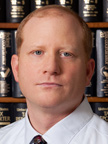Are they real? And do they work?
By Christopher L. Graff, JD, CPA
 Smaller independent practices, consisting of only a few physicians, are increasingly rare. In today’s healthcare environment, sub-specialist physicians who have no or limited hospital duties tend to be more successful in maintaining their independence, e.g., ophthalmologists and dermatologists, as they are able to see large numbers of patients. Unfortunately, many other practices, particularly primary care practices like family medicine and internal medicine, often have more difficulty seeing the number of patients necessary to succeed in private practice. To achieve median compensation for their sub-specialties, primary care providers typically have to see 25 or more patients a day, which was difficult even before the advent of the ACA EHR requirements. Many small to mid-size practices have accumulated so much debt associated with meeting these requirements that the only way they have been able to survive was to become part of a larger group or to add a concierge component to their practices.
Smaller independent practices, consisting of only a few physicians, are increasingly rare. In today’s healthcare environment, sub-specialist physicians who have no or limited hospital duties tend to be more successful in maintaining their independence, e.g., ophthalmologists and dermatologists, as they are able to see large numbers of patients. Unfortunately, many other practices, particularly primary care practices like family medicine and internal medicine, often have more difficulty seeing the number of patients necessary to succeed in private practice. To achieve median compensation for their sub-specialties, primary care providers typically have to see 25 or more patients a day, which was difficult even before the advent of the ACA EHR requirements. Many small to mid-size practices have accumulated so much debt associated with meeting these requirements that the only way they have been able to survive was to become part of a larger group or to add a concierge component to their practices.
Although the integration of the hospitalist model into many hospital systems has taken some pressure off smaller practices because their doctors no longer have to round in the hospitals, this model can cut both ways. Many physicians, especially those who have grown up participating in a call rotation, find it difficult to back away from the hospital environment. They tend to lose a lot of collegiality with other physicians; they feel stuck in the office; and they are often dissatisfied having to deal with the pressure of getting their numbers up.
More often than not, though, private practices tend to find it more profitable not to be in the hospital. The physicians who make that choice often end up spending more time with their families, developing their hobbies, and getting more sleep (see our cover story for the importance of that!). They also tend to make as much, or more, money – I have yet to have any clients who left the hospital and did not end up doing better on their own from a financial standpoint.
However, leaving the hospital is still a big adjustment. Physicians will generally have to see more patients, and if that option is not palatable to them, non-physician providers can contribute to a successful outpatient practice. If physician owners can comfortably add non-physician providers (“NPPs”) without believing that they need to micromanage them, NPPs can bring in additional revenue and allow the physician owners to either maintain their existing practice at their traditional pace and/or allow the physician owners to become even more efficient with their practice as a whole.
To survive in today’s environment, physicians need to be creative and learn to rely on others to maintain and to grow their practices. Although selling out to a larger group or to a hospital system seems like an easy way out from a financial perspective, the lack of control over a physician’s practice can prove to be a greater cost to the more entrepreneurial-minded physician than the financial security generally associated with these larger, more corporate-minded healthcare systems.
 Christopher L. Graff, JD, CPA has worked for The Medical Management Consulting Group, Inc. since 1994, received his bachelor’s degree from the College of William and Mary in 1991, received his law degree from Widener University School of Law in 1994, is licensed in VA and PA, and became a CPA in 2000.
Christopher L. Graff, JD, CPA has worked for The Medical Management Consulting Group, Inc. since 1994, received his bachelor’s degree from the College of William and Mary in 1991, received his law degree from Widener University School of Law in 1994, is licensed in VA and PA, and became a CPA in 2000.

